(77916 products available)






























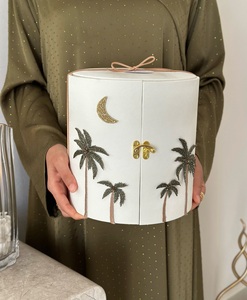

































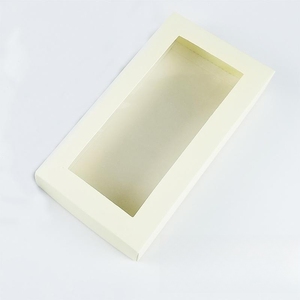



































































































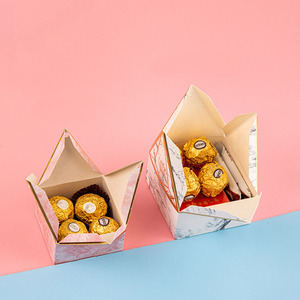









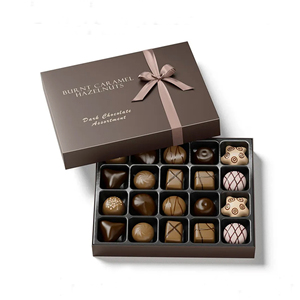

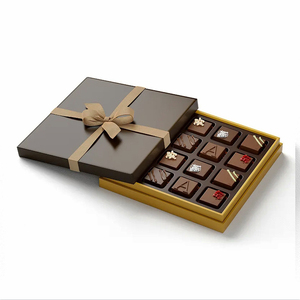





















Candy boxes come in many different types and styles, catering to diverse needs and preferences. From elegant packaging for special occasions to practical containers for everyday treats, these boxes offer versatility and charm. Here are some common types of OEM candy boxes:
OEM Halloween candy boxes
Halloween candy boxes are designed specifically for the Halloween season. They often feature spooky graphics, such as ghosts, pumpkins, and bats. These boxes are used for trick-or-treating, parties, or as festive decorations. They can be filled with various candies and treats, adding to the fun and excitement of Halloween. Halloween candy boxes provide a themed and enjoyable way to share or collect sweets during the holiday.
OEM chocolate candy boxes
Chocolate candy boxes are meant to hold different kinds of chocolates. They are usually flat and wide, with many small spaces inside for each chocolate piece. The boxes often look fancy, with shiny paper on the outside and sometimes clear plastic on top so people can see the chocolates inside. These boxes keep the chocolates safe and make them look nice for giving as gifts or selling in stores.
OEM gummy candy boxes
Gummy candy boxes are designed to hold gummy candies, like gummy bears or gummy worms. These boxes are usually soft and squishy, just like the gummy candies inside them. They come in many fun shapes and colors to make people think about how tasty the gummies will be. Sometimes, the boxes even let people peek inside to see the yummy-looking gummies before buying them. Gummy candy boxes keep the candies fresh and safe and look super fun, making people want to eat the gummies inside.
OEM hard candy boxes
Hard candy boxes are made to hold hard candies like mints or lemon drops. These boxes are usually small and square-shaped, so it is easy to carry them around. They are often made out of see-through plastic, so people can quickly see the colorful candies inside. Hard candy boxes keep the candies fresh and safe and fit conveniently in pockets or purses. Whether enjoyed at home or on the go, hard candy boxes make it simple to have tasty treats available whenever one wants some.
OEM candy gift boxes
Candy gift boxes are special packages used to give candies as gifts. They come in many different shapes and sizes but always look very pretty and exciting. The boxes often have bright colors, bows, or ribbons on them to make them seem extra special. Inside, people put various candies, from chocolates to gummies, so the person receiving the gift gets a tasty surprise. Candy gift boxes are a sweet way to show someone that one cares about them on their birthday, holiday, or any other special occasion.
OEM bulk candy boxes
Bulk candy boxes are large containers meant for storing and selling lots of candies at once. Unlike smaller boxes that hold just a few pieces, these boxes can hold many candies inside to keep them fresh. They work well for shops or places that need to buy or use lots of candies. Bulk candy boxes make it simple to get lots of treats without running out too quickly.
OEM candy boxes come in different designs to meet diverse market requirements. The choice of design depends on the target audience, brand image, and type of candy being packaged.
Logo and Brand Name:
Every candy box has a logo and brand name printed on it. This feature helps in identifying the brand even from a distance. It is an essential part of the branding strategy. The logo and brand name are usually placed prominently on the lid or front panel of the box. This ensures maximum visibility and recognition.
Shape and Size:
The shape and size of an OEM candy box are very important. They should match the candy inside. Boxes can be square, rectangular, round, or even custom-shaped. They can also vary in size. Some hold a single piece of candy, while others hold many. The shape and size should make it easy to store and display the candy. They should also protect the candy and keep it fresh.
Materials Used:
OEM candy boxes can be made from different materials. Each one has its benefits. Paperboard is a common choice. It is light, cost-effective, and easy to print on. For a more luxurious look, manufacturers may use cardstock or add lamination. Plastic boxes offer transparency and durability. They let customers see the candy inside while keeping it safe. Metal tins are also an option. They are strong and can be reused. This adds value to the packaging.
Closure Mechanism:
Closure mechanisms keep candies secure and fresh. They prevent them from going stale or getting dirty. Different closures are used based on the box type and consumer preference. Lids are common for tins and paperboard boxes. They provide a simple way to access the contents. Ribbons or bows add a decorative touch. Flip-top caps offer convenience. They allow one-handed opening and closing. Seals and stickers indicate freshness and tampering.
Graphics and Color Scheme:
The graphics and color scheme of an OEM candy box are vital for attracting buyers. Bright colors and appealing designs draw the eye and stand out on shelves. The choice of colors should match the candy's flavor and brand identity. For example, red or pink might be used for strawberry-flavored candies. Graphics should include images of the candy, the brand logo, and other information. Good graphic design communicates what the product is and makes it look delicious.
Retail stores:
Retail stores use OEM candy boxes to display and sell candies. The boxes are designed to attract customers and keep the candies fresh and safe. Retail stores choose OEM candy boxes that match their brand and store theme.
Birthday parties and events:
People often use OEM candy boxes for birthday parties and events. They serve as party favors or gifts for guests. People choose OEM candy boxes that match the theme and color of the party. They also fill the boxes with candies and other small gifts for the guests to take home.
Corporate gifting:
Companies use OEM candy boxes as part of their corporate gifting. They give these candy boxes to clients, partners, and employees. It is a way to show appreciation and promote the brand. Companies design candy boxes with their logo and brand colors to make them look professional and memorable.
Holiday season:
During the holiday season, OEM candy boxes become very popular. People use them to make gifts and treat others. The holiday season candy boxes often have special designs, like Christmas or New Year themes. People can buy these boxes in stores or online to give as gifts during the holidays.
Special occasions:
OEM candy boxes are also used on special occasions like weddings and anniversaries. Couples may use them as favors for guests or to decorate the reception. OEM candy boxes add a sweet and personal touch to important life events.
Fundraising:
OEM candy boxes are sometimes used in fundraising. Organizations sell boxes of candies to raise money for their cause. The boxes are usually simple and designed to encourage people to buy them for charity.
Subscription services:
With the rise of subscription services, OEM candy boxes are used to deliver candies regularly to customers. These boxes need to be convenient and keep the candies fresh during delivery. Subscription service candy boxes often have a modern look and are easy to open.
Selecting the right candy packaging is crucial for its presentation, protection, and promotion. Here are some important factors to consider when choosing an OEM candy box:
Understand the Candy's Needs:
Different types of candies have different packaging requirements. For example, gummies need airtight packaging to prevent moisture loss, while chocolates need insulation from heat. Understanding these needs is the first step in choosing an OEM candy box that protects the product and keeps it fresh.
Material Matters:
OEM candy boxes are made from various materials, including paperboard, plastics, and corrugated materials. Each of these has its advantages and disadvantages in terms of cost, sustainability, protection, and appearance. For instance, paperboard is lightweight and recyclable, while corrugated materials offer more protection for heavier items.
Regulatory Compliance:
The food packaging industry is governed by strict regulations to ensure consumer safety. When choosing an OEM candy box, ensure the manufacturer complies with relevant laws and standards, such as using food-grade materials and labeling requirements. Ignoring compliance can lead to legal issues and endanger consumers.
Sustainability is Key:
With the growing concern about environmental issues, many consumers prefer brands that prioritize sustainability. This could mean using recyclable materials, reducing packaging waste, or opting for biodegradable options. Manufacturers should consider their environmental impact and choose OEM candy boxes that align with sustainability goals.
Customization and Branding:
OEM candy boxes offer a chance for custom branding and design. From colors and graphics to shapes and sizes, the packaging can reflect the brand's identity and appeal to consumers. Customization should also consider the production process and cost, ensuring it is feasible without compromising the budget.
Cost Considerations:
The cost of the OEM candy box is a significant factor in the decision-making process. This includes the price per unit, which can vary depending on the materials, design, and customization. Manufacturers should balance quality and cost, ensuring the packaging meets all the above factors without exceeding the budget.
Supply Chain and Lead Time:
The OEM candy box's availability and the manufacturer's lead time can impact the production schedule. Choosing a supplier who can deliver the boxes promptly is essential, especially if the candy has a short shelf life or is tied to a seasonal promotion. Additionally, the boxes should fit well within the supply chain, being easy to transport and store.
Testing and Prototyping:
Before mass production, testing and prototyping the OEM candy box is essential. This allows manufacturers to check the fit, strength, and ease of assembly and make any necessary adjustments. Testing also helps ensure the packaging can withstand the rigors of transportation and handling, reducing the risk of damage and product loss.
Q1: What are the benefits of using candy boxes?
A1: Candy boxes are an essential part of the packaging industry. They offer many benefits, such as keeping the sweets fresh and tasty, enhancing their look to attract buyers, being eco-friendly, and offering customizable options.
Q2: Which materials are commonly used for making candy boxes?
A2: Candy boxes are made from paperboard, plastic, acrylic, and glass materials.
Q3: How can one customize a candy box?
A3: Candy boxes can be customized by creating them in different shapes, sizes, and colors. Furthermore, they can have company logos and other branding information printed on them. Additionally, one can add inserts or compartments to hold different types of candies separately.
Q4: What factors should be considered when choosing a candy box?
A4: When choosing a candy box, consider the type of candy, target market, and desired aesthetics. Additionally, think about the materials used, as they should be environmentally friendly and cost-effective, and ensure that the boxes are easily customizable and provide good protection.
Q5: What is the role of printing and labeling in candy boxes?
A5: Printing and labeling on candy boxes provide essential information to consumers, including ingredients, nutrition facts, and allergen warnings. It also plays a crucial role in branding and marketing, helping to identify the product and create brand recognition.